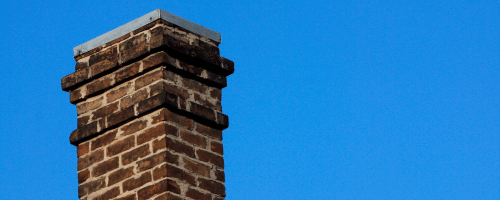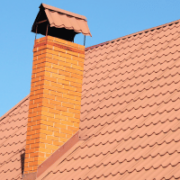How Northern Virginia Weather Impacts Your Chimney’s Health
Northern Virginia’s diverse weather poses various risks to chimney health. Heavy rainfall can weaken brick and mortar, leading to water damage and mold growth. Snow accumulation adds weight, threatening structural integrity and increasing freeze-thaw cycles, which create cracks. High humidity also fosters mold, further endangering chimney materials. Regular inspections, especially after rain or snow, are essential for early detection of issues. Proper maintenance and waterproofing can mitigate risks and extend the life of your chimney. Understanding these weather influences is vital for homeowners, and exploring these aspects further can lead to effective preventive measures.
Key Takeaways
- Heavy rainfall can weaken chimney materials, leading to mold growth and water infiltration damage.
- Accumulated snow increases pressure on chimneys, risking cracks and structural damage.
- Freeze-thaw cycles cause brick and mortar to crack, allowing deeper water infiltration.
- High humidity levels promote mold growth, which can deteriorate both chimneys and home interiors.
- Regular seasonal maintenance is essential to identify and mitigate weather-related chimney issues.
Rainfall and Water Damage
Experiencing heavy rainfall, homeowners in Northern Virginia must be aware of the potential for water damage to their chimneys. The region’s unique weather patterns can lead to significant issues if proper northern Virginia chimney maintenance is not observed. Excess moisture can infiltrate the chimney structure, weakening materials and promoting the growth of mold and mildew.
The impact of rain on chimney integrity is profound. Water can cause brick and mortar to deteriorate, leading to spalling and structural instability. Homeowners should prioritize regular inspections, especially following heavy rainfall, to identify early signs of damage.
Implementing chimney health tips, such as ensuring proper flashing and installing a chimney cap, can help mitigate these risks. Additionally, ensuring adequate drainage around the chimney base is crucial for preventing water accumulation.
By understanding the chimney weather impact in Northern Virginia, homeowners can take proactive measures to protect their investment. Regular maintenance and timely repairs are essential in preserving chimney health and preventing costly damage from persistent rainfall.
Snow Accumulation Risks
Snow accumulation poses significant risks to chimneys in Northern Virginia, particularly following periods of heavy rainfall when the structure may already be compromised. The weight of accumulated snow can exert excessive pressure on chimney components, leading to structural damage, especially in older or poorly maintained chimneys. This added weight can cause cracks in the chimney crown, flue tiles, or masonry, ultimately affecting the chimney’s integrity and safety.
Additionally, snow can trap moisture against the chimney, promoting the growth of mold and mildew, which can further deteriorate the materials. The risk of ice formation is heightened as temperatures fluctuate, which can exacerbate any existing vulnerabilities. When melted snow refreezes, it creates expansion and contraction within the chimney structure, contributing to further cracking and deterioration.
Moreover, snow accumulation can obstruct chimney caps and flues, increasing the likelihood of chimney fires or dangerous smoke backdrafts. Regular inspections and maintenance are essential to mitigate these risks. Homeowners should ensure their chimneys are clear of snow and debris, and consider professional assessments following significant winter weather events to safeguard against potential damage.
Freeze-Thaw Cycle Effects
The freeze-thaw cycle presents a significant challenge for chimney health in Northern Virginia, as repeated fluctuations in temperature can lead to material degradation.
When temperatures drop, moisture within the chimney materials freezes, expanding and exerting pressure on the structure. This expansion can cause cracks in brickwork, mortar joints, and flue liners, compromising the integrity of the chimney.
As temperatures rise, the ice melts, allowing water to infiltrate deeper into the materials. This process creates a cycle where the chimney is repeatedly subjected to stress, ultimately leading to more severe damage.
Over time, this cycle can contribute to the deterioration of the chimney’s structural components, increasing the risk of costly repairs or even complete failure.
Additionally, weakened materials may become more susceptible to other environmental factors, such as rain and wind, exacerbating the deterioration process.
Regular inspections and maintenance are essential in Northern Virginia to identify early signs of freeze-thaw damage. Addressing these issues promptly can help preserve chimney health and ensure safe operation, protecting both the structure and the occupants of the home.
Humidity and Mold Growth
In addition to the challenges posed by freeze-thaw cycles, humidity plays a significant role in the health of chimneys in Northern Virginia. The region’s high humidity levels create a conducive environment for mold growth, which can severely compromise the integrity of chimney materials.
When moisture accumulates within the chimney structure, it can penetrate porous materials such as brick and mortar, leading to deterioration over time.
Mold thrives in damp conditions, and if left unchecked, it can spread rapidly, affecting both the chimney and the surrounding areas of your home. This not only poses health risks to inhabitants but can also lead to costly repairs.
Mold can cause discoloration and structural weakness, making it imperative to address humidity issues promptly.
Regular inspections and maintenance are crucial in identifying potential mold development before it escalates. Homeowners should monitor for signs of dampness, such as water stains or musty odors, which may indicate underlying moisture problems.
Seasonal Maintenance Tips
Regularly performing seasonal maintenance on chimneys is essential for ensuring their longevity and functionality, particularly in the diverse climate of Northern Virginia.
The region’s heavy rainfall, snow, and freeze-thaw cycles can lead to significant wear and tear on chimney structures.
In spring, inspect the chimney for any damage caused by winter weather.
Look for cracks, loose bricks, or missing mortar, and schedule necessary repairs promptly.
Clean the flue and check for blockages to ensure proper airflow for the upcoming heating season.
During summer, take advantage of the dry weather to perform a thorough cleaning of the chimney exterior.
Remove any debris, including leaves and branches, that may obstruct airflow.
Ensure that the chimney cap is intact to prevent water intrusion and animal entry.
As fall approaches, hire a professional chimney sweep to conduct a comprehensive inspection and cleaning.
This step is crucial before the colder months, as soot and creosote buildup can pose fire hazards.
Finally, consider waterproofing the chimney to protect it from moisture damage during the winter.
Skilled Chimney Sweep in Northern Virginia
In conclusion, the diverse weather patterns of Northern Virginia significantly impact chimney health, exposing structures to risks associated with rainfall, snow accumulation, freeze-thaw cycles, and humidity. These factors can lead to deterioration of materials, structural weaknesses, and potential blockages. Implementing regular inspections and maintenance strategies is crucial for mitigating these adverse effects, thereby preserving the integrity and functionality of chimneys. Proactive measures will ultimately enhance the longevity and safety of chimney systems in the region.
Sixpenny Chimney Sweeps
Serving Woodbridge, Alexandria, Arlington, VA & Surrounding Areas
(703) 491-8697





Leave a Reply
Want to join the discussion?Feel free to contribute!